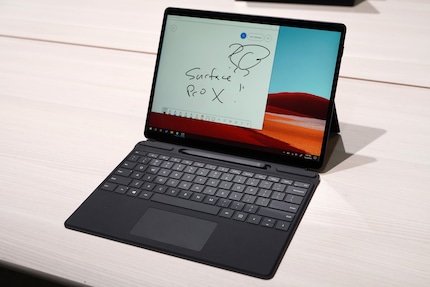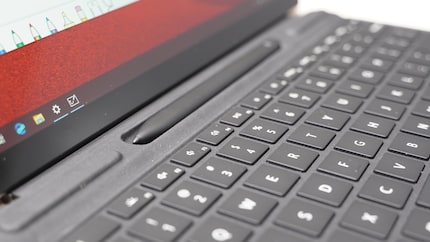
News + Trends
The Surface Duo and the dual-screen notebook Neo steal the show at the Microsoft event
by Philipp Rüegg
Equipping a Surface with an ARM processor? Not a bad idea. «Smartphone hardware» makes battery runtimes possible that can’t be achieved with conventional processors. What I realised in New York is that this device isn’t only charming, it also leaves a few questions unanswered.
Microsoft invited the digitec editors to New York as the only Swiss attendants. Obviously, I didn't hesitate. Unfortunately, however, I wasn't allowed to try out the future dual-screen products nor the new saucer earbuds that my colleague Philipp Rüegg presented in his article on the Surface event.
I wasn’t allowed to go to a quiet hands-on room, either, as these places are reserved for famous Youtubers. So, as you can see in the somewhat chaotic video, I spent my days with the lower-class press representatives in the crowded rooms. I don’t mind – I still managed to get my hands on and the camera behind a Surface Pro X (even if without a camerawoman).

It weighs less than 800 grams, is 7.3 millimetres thin and has a 13-inch display (2880 × 1920 pixels) that comes in a 12-inch format with narrow edges. So it's the same size as the Surface Pro devices without X. What's surprising about this device, which has no fan, is that it doesn't feature an Intel processor but an ARM chip called SQ1, developed with Qualcomm.
The built-in SoC has an integrated LTE modem and a power consumption of only 7 watts. On top of this, it's supported by an AI accelerator, which, for example, corrects the perspective during video conferences to make sure it always looks like your conference partner is looking you in the eye.
Sounds pretty good, but I still have quite a few questions. Especially after Microsoft and Adobe introduced the Fresco software on stage and then talked about other products that they’re working on. Adobe Acrobat is mentioned – but Photoshop, InDesign or Illustrator aren’t. Is it possible that the x86 emulation in Windows doesn’t have enough power for ARM therefore everything needs to be adapted first? Or is it because only 32-bit code can be emulated? Be that as it may – Adobe Fresco allows creative people to have fun with this device now already: draw and paint with digital water or oil colour.

What I really like is the Type Cover with integrated Surface Slim Pen. The pen is in the cover and charged by induction whenever you’re not using it. You’ll never have an empty battery. I tested the pen and liked the way it sat in my hand, despite its flat shape. It lets you take handwritten notes just as easily as entries in Office programs that are directly translated from handwriting.
Drawing, however, takes some getting used to. I'm not a great artist, but I've tried various Wacom devices and I have to say that the surface of Wacom products is easier to work with. Tablets or 2-in-1 devices have a slippery surface in comparison, while graphic tablets feel more like you're drawing on paper.
During my test, the Surface Pro X ran smoothly with many open browser tabs. I’m looking forward to seeing how this tablet does in a future review. The first Surface Pro X devices are scheduled to be released in Switzerland on 19 November.
I find my muse in everything. When I don’t, I draw inspiration from daydreaming. After all, if you dream, you don’t sleep through life.
From the latest iPhone to the return of 80s fashion. The editorial team will help you make sense of it all.
Show all